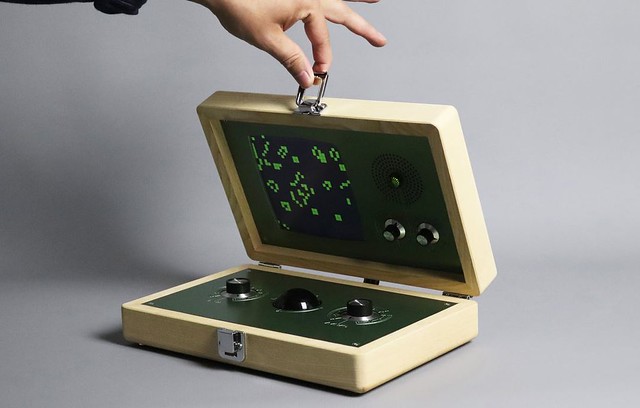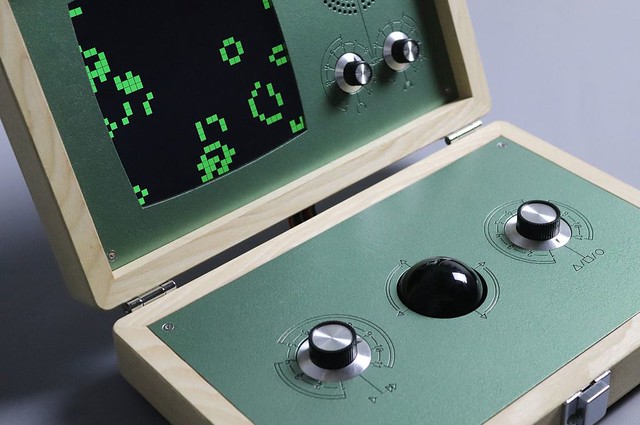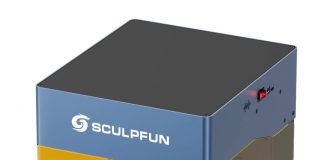Love Hultén usually creates gaming machines, often very expensive and often very beautiful and well thought out. They generally provide access to a huge catalogue of titles in retro-gaming. Like many Arcade solutions on the market, they stand out above all for the perfect quality of their integration.

For the Evoboxx, the designer decided to change the deal by proposing a unique object rather than a game tool as beautiful as it is. The small case created by the designer is designed to run Game of Life, a “game” designed in 1970 by mathematician John Conway. Minimalist, the game doesn’t really have a player, it is totally contemplative.
The rules are simple, each filled space (the game is based on a grid of identical squares) represents a cell.
- Each cell with a neighbouring cell or no cell, dies. (By solitude)
- Each cell with four or more cells dies. (by overpopulation)
- Each cell with two or three neighbouring cells survives.
- For each empty space with three neighbouring cells, one cell appears.
The player therefore gives a starting situation in which he “paints” full cells on the grid before starting the game. It sounds simple but the mathematical and graphical possibilities are immense. Running a machine with this game and a huge grid often gives unexpected results.

The Evoboxx therefore offers you a rather decorative and surprising object. The device unfolds like the designer’s other cases and features a 8″ screen driven by a Raspberry Pi 3 B+ card. A pointing device consisting of a giant 50 mm trackpad ball allows you to position your first cells on the surface. An audio synthesizer accompanies the evolutions of each step through a single loudspeaker. Reproducing basic sounds that will punctuate the experience.
It is obviously possible to change the system and integrate another game into the case, but the Evoboxx is built as a whole. A strange and rather fascinating solution, a curiosity to deposit and observe. A machine as interesting by its mathematical side as by the beauty of its construction.









